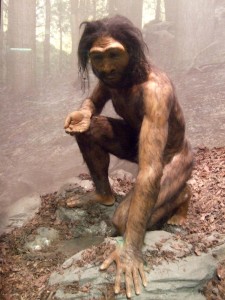Seeing Voices in the Museum
Evolution galleries: Humans and other animals

I’ve been interested in human evolution ever since spending time learning about it during my Human Sciences degree in the late nineties, so whenever I’m in a museum with a human evolution gallery, my antennae start quivering. I’ve visited a couple in the USA over the past few years — one in the American Museum of Natural History in New York, and, last year, in the Smithsonian National Museum of Natural History. I just love the idea of looking back at our ancestors, and also of being reminded that over the past few million years other species of humans and hominids have existed, often in parallel with each other.
I’m used to seeing these galleries, or even the single human evolution cases in some museums, presenting the various human species on their own, or maybe alongside a few other primates. The museums nip off a single twig of the evolutionary tree, usually starting with modern humans evolving from something like an australopithecus, and maybe hinting that these evolved from an earlier primate species.
[Read More]